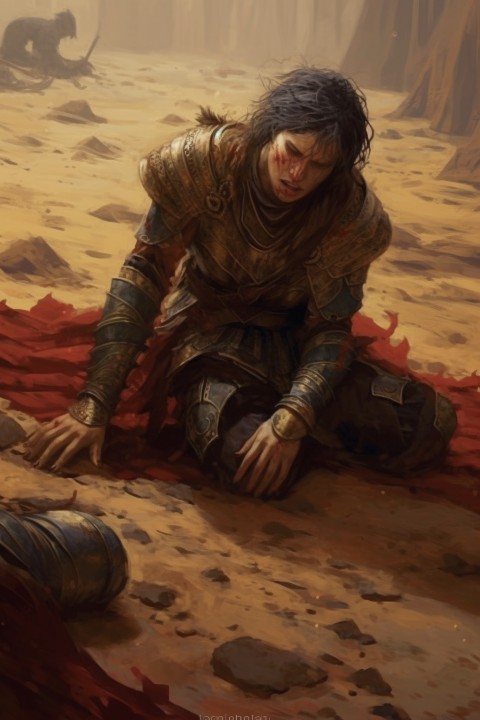Ever found yourself scratching your head over the peculiarities of the Death Save system in Dungeons and Dragons (DnD) 5e? In particular, how the system seems disconnected from the gameplay and action. It can seem counter-intuitive when zero hit points result in the same outcome for any character, regardless of how they arrived there. The Death Save min-game is the same, whether you’ve taken a single point of damage, or sustained a catastrophic 150-foot fall. In this post, I aim to dissect the effects of this system on the game and propose a house rule that could shake things up to make the prospect of death an exciting part of the action again.

Death Saves in Action
Under the standard 5e DnD rules, when you hit 0 HP you start rolling an unmodified D20 (in most cases) once you hit 0 HP, with a 10 or higher marking a success and a 9 or lower signifying a failure. The odds are slightly in favor of success (55%) than failure (45%) on each roll. After you accumulate three of either outcome, your fate is sealed. So you have a 60% chance of survival, with 18% of those possibly regaining consciousness at 1 HP. Most of these rolls resolve themselves within four turns, although Healing Word makes most of that irrelevant anyway.
While this system allows for players to quickly rejoin the action, it doesn’t necessarily add to the excitement of the encounter if reaching 0 HP doesn’t carry much risk. In fact, the urgency for other players to save you diminishes as you’re not under immediate threat. In fact, I would suggest that this was so devoid of tension that Healing Word was designed the way it was just so you didn’t have to interact much with the system. To me, this illustrates how rules can cascade across the system, reducing tension and lessening the importance of team interdependence.
House Rule: Positive Experiences through Negative Hit Points
I used a House Rule in my 3E days that I think could easily be adapted in 5E. This rule ties the risk of death more closely to the level of action, buts more managed uncertainty back into an encounter, and encourages collective responsibility for the group’s survival.
A character can drop negative HP up to their Constitution (CON) score plus level, before they succumb to death. When a character’s HP drop below 0 and they haven’t yet stabilized, they need to make a CON save. The difficulty class (DC) for this save is equal to their current negative hit point total. Failure results in the character’s demise, while a successful save inflicts 1 point of damage. Achieving success on two saves stabilizes the character at their present negative HP value.
Any healing received that doesn’t elevate the character to 0 HP or above, counts as a single successful save towards stabilization.
Characters with a negative HP value up to their CON modifier must remain prone and are unable to take bonus actions or reactions until their hit points return above 0.
DMs may want to consider removing the Healing Word spell from the game or reducing it to just 1d4 of healing, otherwise this is needless complexity without changing things much.
Effect on Play
Does this house rule make the game more “realistic?” Not necessarily. HP in DnD isn’t designed to mimic reality. Instead, it sets the tone of the game. Under this rule, stabilization could be achieved after a few successful rolls - relatively simple at -1 HP, but quite challenging at -15 HP.
This rule adds a sense of urgency and heightened risk to the game play. The deeper into the negatives you go, the harder it is for you to recover. Healing now has a significant effect, and the scale of the healing can make a significant difference. Even Healing Word is helpful, but not as over powered as many lament.
The heightened stakes inspire more caution as characters become more wounded and make players more invested in their downed teammates’ outcomes. Ultimately, this gives players more reasons to interact, and damage becomes more than a countdown to zero HP.
In other words, downing a hero is back to being a significant event in combat, as it should be.
Conclusion
While the 5e Death Save system serves its purpose, its disconnect from the action in an encounter and lack of urgency can leave some players wanting more. By revisiting an older house rule, I think we can add back some tension, interactivity, and adjust the tone of encounters so they feel like something is at stake again.
In the end, it’s about the feel of your game. Does the standard Death Save system work for your group, or could you benefit from tweaking the rules to spice things up? I’d love to hear your thoughts and experiences, so feel free to reach out to me on Twitter!